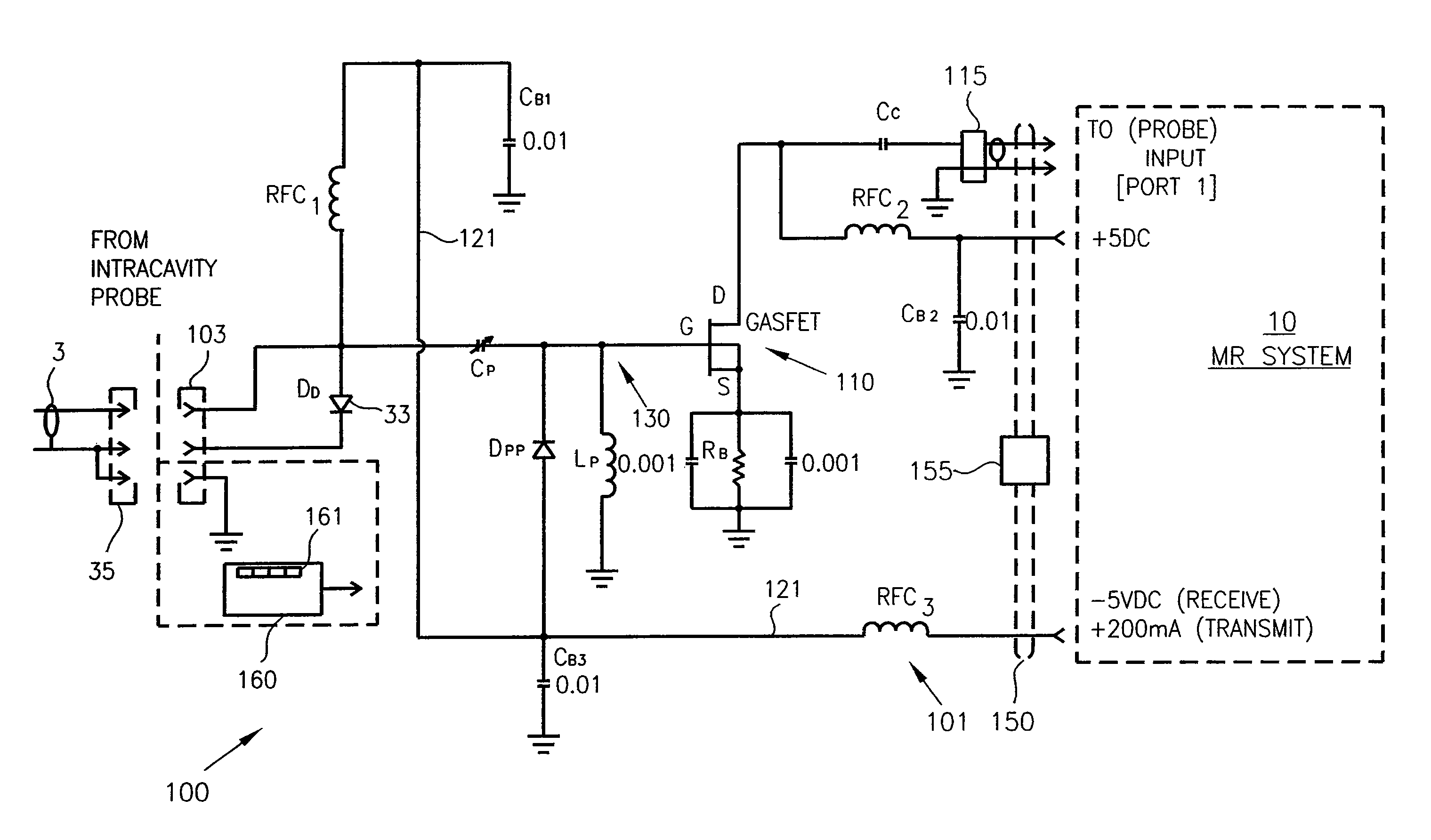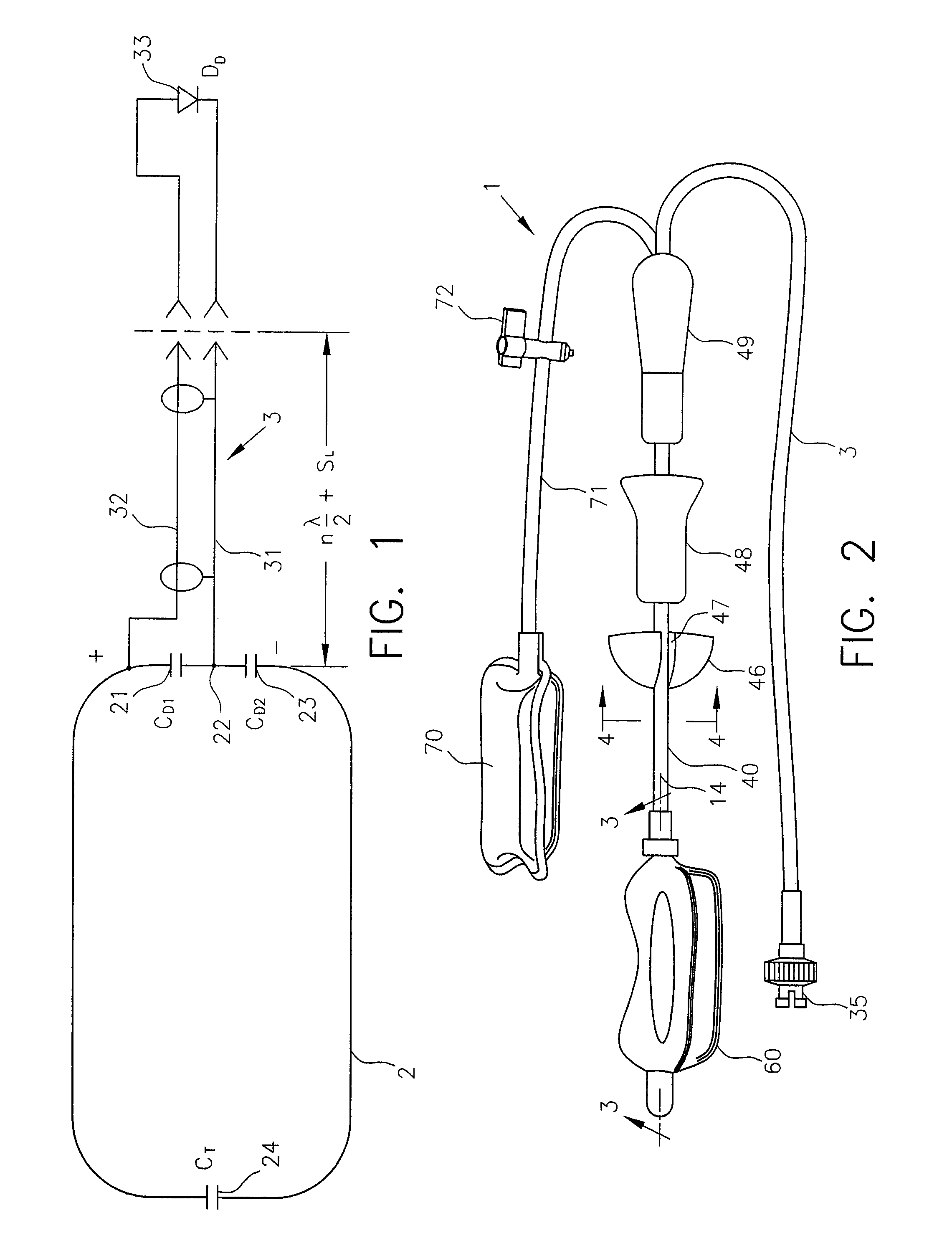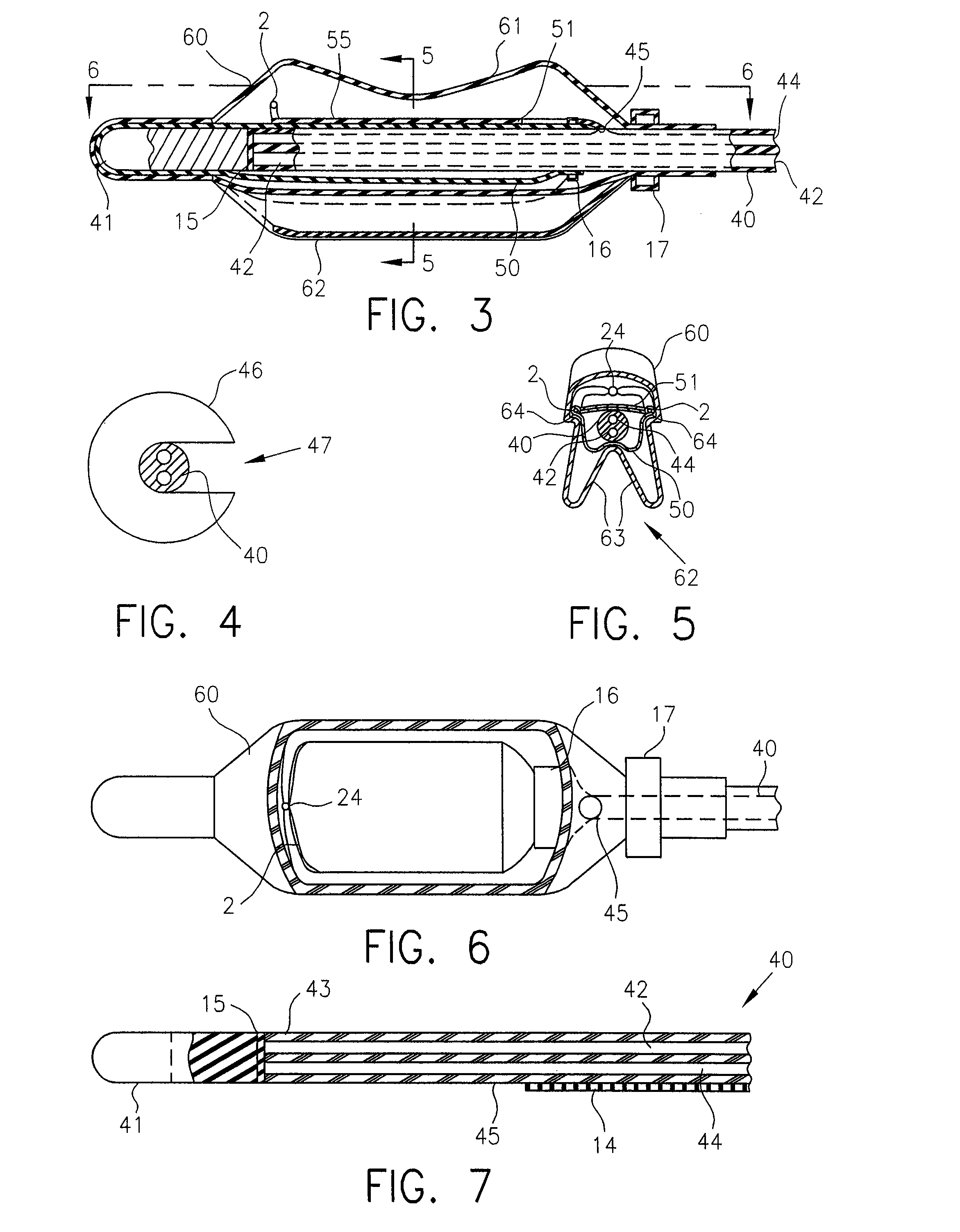Interface devices for use with intracavity probes for high field strength magnetic resonance systems
a high field strength magnetic resonance and interface device technology, applied in the field of intracavity probes, can solve the problems of inability to use mr systems designed to operate, inherent single coil approach,
- Summary
- Abstract
- Description
- Claims
- Application Information
AI Technical Summary
Benefits of technology
Problems solved by technology
Method used
Image
Examples
Embodiment Construction
[0052]In all of its embodiments and related aspects, the present invention disclosed below is ideally used with magnetic resonance (MR) systems designed to operate at 3.0 Tesla field strengths, though it is also applicable to those operable from approximately 2.0 to 5.0 T. For purposes of illustration below, the invention will be described in the context of the 3.0 T systems produced by General Electric Medical Systems (GEMS).
[0053]FIGS. 1-7 illustrate one aspect of a presently preferred embodiment of the invention, namely, an intracavity probe, generally designated 1. The probe is intended for use with an MR system to obtain images or spectra of a region of interest within a cavity of a patient. It is described herein in a specific implementation, i.e., as an endorectal probe designed to be inserted into the rectum to obtain images and / or spectra of the male prostate gland. Although presented herein as an endorectal probe, it should be understood that the invention is equally capab...
PUM
 Login to View More
Login to View More Abstract
Description
Claims
Application Information
 Login to View More
Login to View More - R&D
- Intellectual Property
- Life Sciences
- Materials
- Tech Scout
- Unparalleled Data Quality
- Higher Quality Content
- 60% Fewer Hallucinations
Browse by: Latest US Patents, China's latest patents, Technical Efficacy Thesaurus, Application Domain, Technology Topic, Popular Technical Reports.
© 2025 PatSnap. All rights reserved.Legal|Privacy policy|Modern Slavery Act Transparency Statement|Sitemap|About US| Contact US: help@patsnap.com



